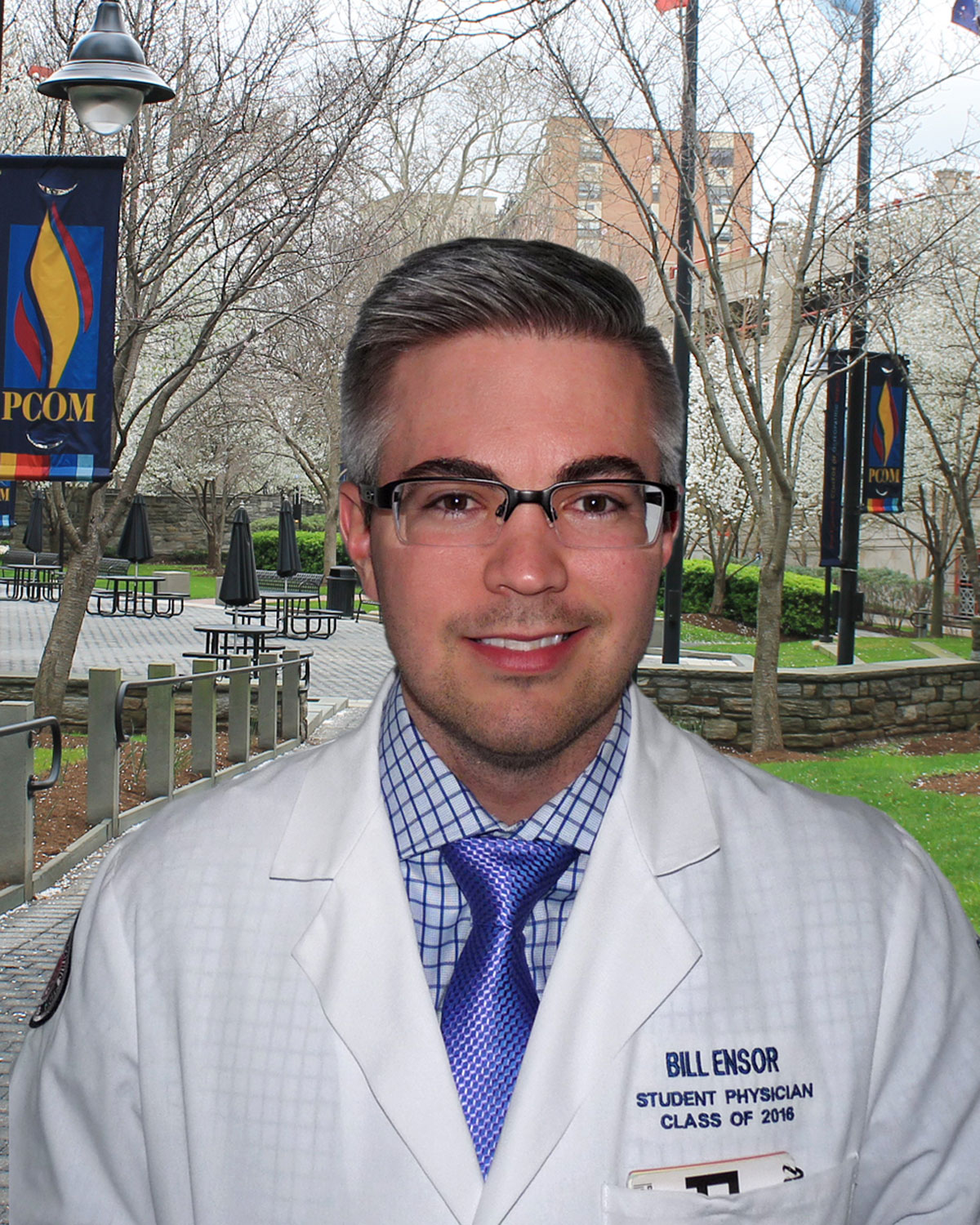William Ensor
DO '16
 William Ensor (DO ’16)
William Ensor (DO ’16)
For future physicians, sometimes a routine learning experience can turn into a life-or-death
situation. This is the situation in which William Ensor found himself last fall after
a daylong Home Healthcare exercise led by the Department of Geriatrics, which takes
place during the Urban Community Medicine clinical clerkship.
During this exercise, fourth-year DO students meet with a PCOM geriatrician and are
briefed on the medical history of a specific patient that the student will visit in
the patient’s home. “Our initial goal as the student physician is to identify any
possible home health hazards for the patient, check for a well-stocked refrigerator,
and inspect for grab-rails by the toilet and bathtub,” said Mr. Ensor. “We then proceed
with our usual medical assessment of the patient reporting our findings to the attending
Geriatrician to create a plan for the patient.”
An additional exercise occurs in PCOM’s simulation lab later in the day. Students
are presented with the theoretical situation that their patient from earlier in the
day is now experiencing sudden cardiac arrest. Despite providing CPR, the simulated
patient does not survive (in reality, the patient is still alive). The student must
then practice giving the bad news to a standardized caregiver—an actor who is portraying
a member of the patient’s family.
When it came time for Mr. Ensor to visit his real patient for the day, something seemed
off as soon as the encounter began. After a brief introduction, the patient was conducting
his own blood pressure readings with an automated blood pressure cuff, revealing a
low reading of 70/40. “I thought to myself that can’t be right, the patient is up
walking around and talking without any problems,” recounts Mr. Ensor. “I re-checked
the blood pressure with my own cuff and measured a blood pressure of 67/30.”
At this point Mr. Ensor’s patient reported feelings of lightheadedness and blurry
vision. Through speaking with the patient, Mr. Ensor learned the man had just been
discharged from the hospital within the past week, and he advised the man to return.
The patient initially refused, but after speaking with his primary care provider by
phone, the patient agreed to go back to the hospital.
Mr. Ensor dialed 911 and stayed with the patient until the paramedics arrived. The
patient was transported to a nearby hospital for treatment. Days after the encounter,
it was revealed the patient did have an acute coronary syndrome and was transferred
to a larger hospital to have stents placed within the arteries supplying blood to
his heart.
Mr. Ensor says that his rotation through the Family Medicine practice on PCOM’s campus
helped him feel prepared for just such an event. “Many patients would come to the
office with emergent medical conditions that necessitated a hospital admission. That
experience made me feel very prepared to handle real-world experiences like this one.”
 William Ensor (DO ’16)
William Ensor (DO ’16)